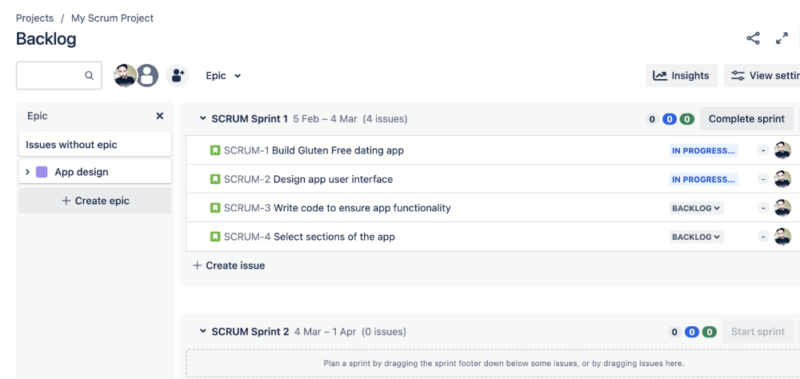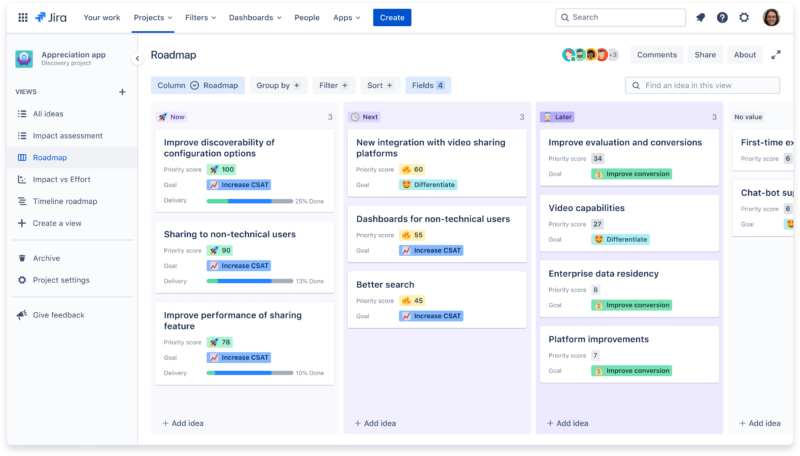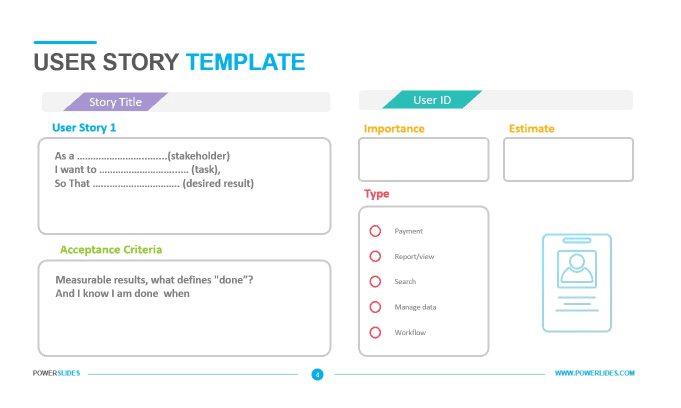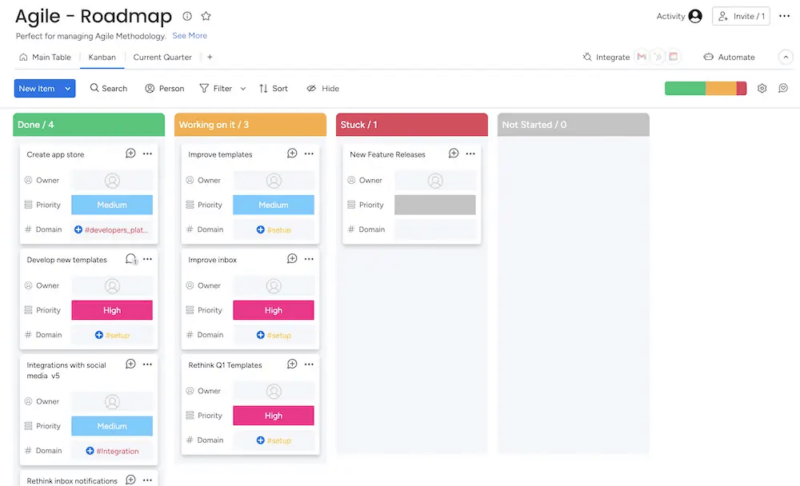
Why you can trust us
- 407 Cloud Software Products and Services Tested
- 3056 Annual Software Speed Tests
- 2400 plus Hours Usability Testing
Our team of experts thoroughly test each service, evaluating it for features, usability, security, value for money and more. Learn more about how we conduct our testing.
10 Skills of a Product Owner
Below, we’ll break down the skills across two separate categories, explaining why each skill is important.
Product Owner Hard Skills
1. Ability to Build a Product Backlog
The product owner is responsible for building a product backlog for development teams. This means being able to create a set of tasks (user stories) and features that are required to build a product. The product owner needs to be able to determine which tasks are the most important and know which tasks should take priority over others.

Leading tools like Jira make it easier to create a product backlog.
Product owners should also be able to identify certain task dependencies and determine the complexity of each task by using agile estimation techniques. A clear product backlog makes sprint planning much easier and can lead to enhanced productivity.
2. Ability to Build a Product Roadmap and Vision
After the product owner gathers information from the end user, they must then be able to build a product vision. This involves building a roadmap for what the product will look like and the path they’ll take to reach the end goal. The clearer the product vision, the easier it will be for the development team to achieve the overall goal.

Map out your entire vision through a detailed roadmap for the product.
A certain level of flexibility is required here, as the roadmap can change paths. Quick thinkers will have a competitive edge, as they will be more agile throughout the process.
3. Understanding User Stories
The product owner needs to accurately break down product features and create user stories. This means explaining who the user is, what product they want and why they want it. Being able to craft clear user stories is essential, as it helps the product development team create a smooth workflow and reduces the risk of bottlenecks.

Plenty of tools and templates can help you create user stories.
The product owner must be comfortable gathering user feedback throughout the process, as it helps refine user stories. Stick to the formula of answering the who, what and why. Product owners must also be comfortable helping developers establish the definition of ready (DoR), the definition of done (DoD) and the acceptance criteria.
4. Research and Analytical Skills
Understanding a product isn’t solely about what external stakeholders tell you. A good product owner knows which questions to ask to understand the product. They are also able to analyze potential issues that may prevent the team from meeting client needs. The soft skills below will demonstrate how best to manage this.
5. Knowledge of Project Management Software
Today, many product owners complete their work online. This means using the best agile software to carry out the technical aspects of the role. Having a strong understanding of how this software works and being able to put it into practice will better position you to advance your career.

Today’s project management tools are adaptable for product ownership roles.
If you’re on the hunt for good project management software, we recommend reading our monday.com review. monday.com has all the tools a product owner needs, plus plenty of useful templates to help you get started.
Product Owner Soft Skills
6. Communication Skills
The product owner is the messenger for the end user, so they need to be able to communicate effectively with the development team. The product owner is responsible for ensuring there’s no confusion about what needs to be done, and they need to be able to effectively communicate the end user’s expectations.
Successful product owners also need to be able to effectively communicate issues to the end user. This means having the confidence to have potentially difficult conversations and the ability to communicate clearly under pressure.
7. Collaboration Skills
Product owners work closely with several departments, as well as internal and external stakeholders, scrum developers and the scrum master. They need to be able to play nice with others and ensure they’re doing their part to help others produce work to the best of their abilities.
Similar to communication skills, the ability to collaborate well means being able to effectively provide feedback. Product owners also need to be receptive to feedback, have strong emotional intelligence and avoid taking anything personally in order to move forward with the project requirements.
8. Leadership Skills
Leadership skills entail more than just telling others what to do. They also entail maintaining a state of calm in what’s often a high-pressure environment. Product owners need to be approachable and instill a sense of confidence so the team trusts them to steer everything in the right direction.
9. Problem-Solving Skills
Several issues will arise throughout the development process. Features may not work, bugs can appear and the original product roadmap could go off track. A good product owner reacts to problems calmly and rearranges objectives to keep the project moving forward.
Knowing how to reprioritize tasks and workloads is vital when solving problems. In metaphorical terms, the product owner needs to ensure a smooth-sailing ship even when waves of difficulty arise.
10. Managing Client Expectations
Often, what a client wants and what is realistic don’t always align perfectly. Some product owners can be guilty of over-promising because they want to retain the client. This almost always leads to under-delivering, causing bigger complications down the line.
A confident product owner can manage client expectations early and lean on their communication skills to let the client know what is achievable when building a new product or fixing issues in a pre-existing product.

